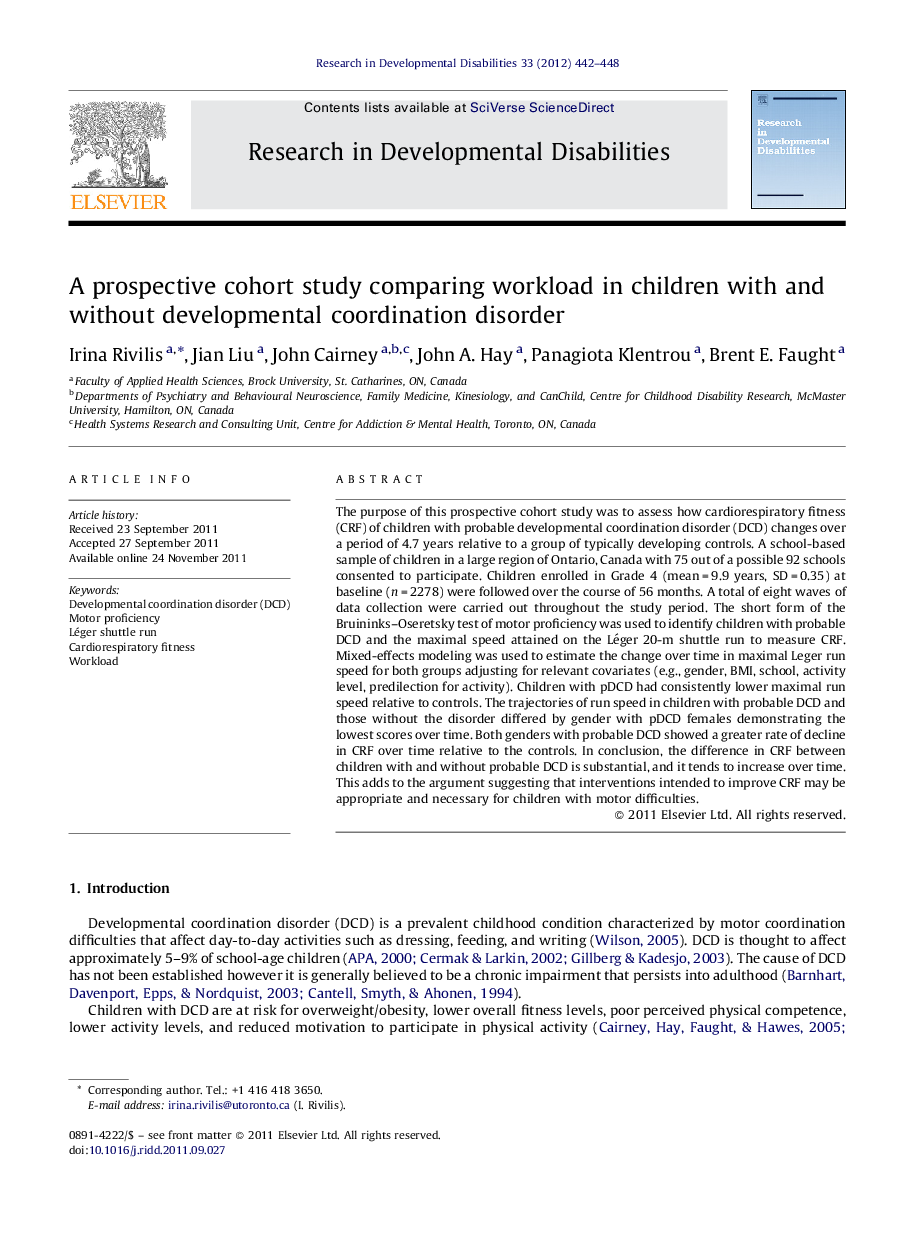ترجمه فارسی عنوان مقاله
یک مطالعه کوهورت آینده نگر با مقایسه حجم کار در کودکان با و بدون اختلال هماهنگی رشدی
عنوان انگلیسی
A prospective cohort study comparing workload in children with and without developmental coordination disorder
| کد مقاله | سال انتشار | تعداد صفحات مقاله انگلیسی |
|---|---|---|
| 39412 | 2012 | 7 صفحه PDF |
منبع

Publisher : Elsevier - Science Direct (الزویر - ساینس دایرکت)
Journal : Research in Developmental Disabilities, Volume 33, Issue 2, March–April 2012, Pages 442–448
ترجمه کلمات کلیدی
اختلال هماهنگی رشدی (DCD)؛ مهارت حرکتی ؛ لژه اجرا شاتل؛ آمادگی قلبی عروقی؛ حجم کار
کلمات کلیدی انگلیسی
Developmental coordination disorder (DCD); Motor proficiency; Léger shuttle run; Cardiorespiratory fitness; Workload

